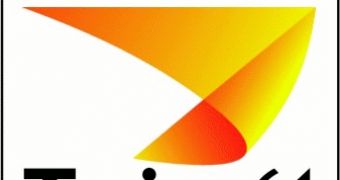Last year, AMD launched Kite, not of any flying kind, but something more similar to Intel's Centrino platforms. The big difference stands in the large number of technologies AMD recommends manufacturers to incorporate alongside their processors. This might be called somewhat of an open standard platform in which the number of players decides the outcome of the game.
Although the launch of Kite came sooner than Intel's Centrino Pro (Santa Rosa) platform, AMD plans to refresh it in the same time frame as Intel's launch. The refresh includes DDR2-800 support, a feature that Santa Rosa will also have, and support for AMD 65nm Hawk processors, hybrid hard drives, hybrid graphics and HDMI. The platform refresh is based around the RS690T chipset, with the graphics being provided by an derivative Radeon X700 core and SB600 as the southbridge.
The platform also includes 802.11n draft wireless support, of course, much like Intel's Santa Rosa. AMDs initiative of taking a part of the notebook market through the introduction of a mobile platform is quite new. By comparison, Intel will already have marketed their fourth generation of mobile platform, and AMD will be at its second generation, which is actually a refresh of the first one, so they lack the same field experience Intel has achieved over the years.
Future plans from AMD include the Puma platform, which will integrate the next generation Griffin processors, alongside with a series of chipsets which support DirectX 10, PCI Express 2.0 and Hyper Transport 3. Let's not look so far away into the future because details concerning power consumption on the 65nm Turion processors with the low-power RS690T chipset, as stated by AMD, should increase battery life to from four hours to more than five hours. Hard to say what success will AMD have but it's a good start.

 14 DAY TRIAL //
14 DAY TRIAL //